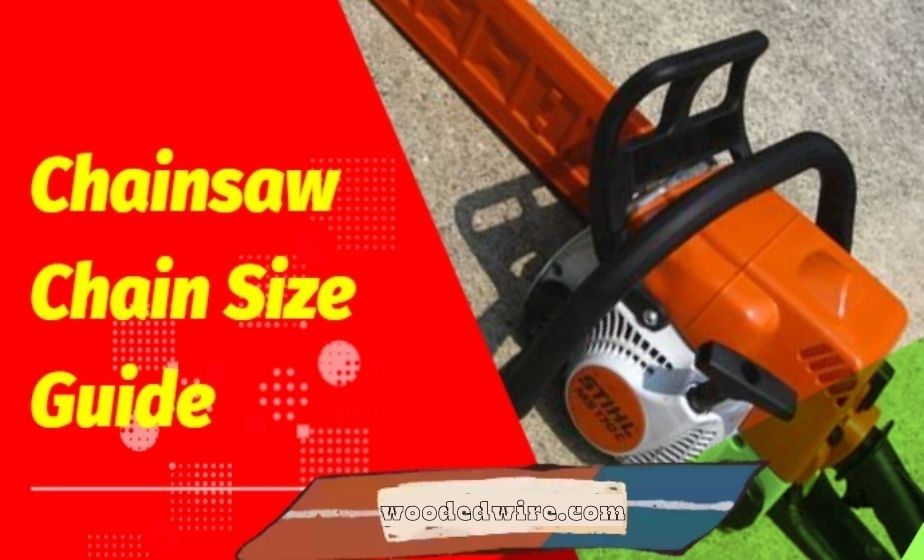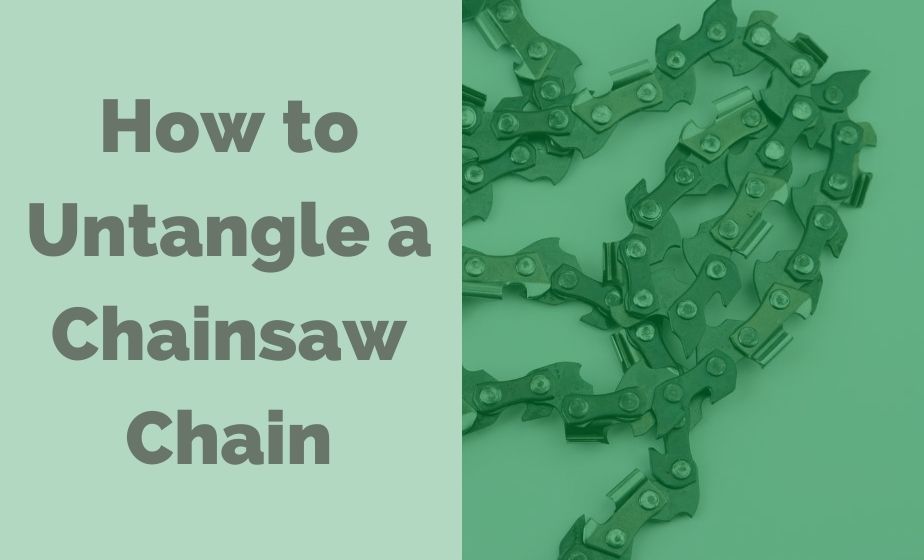When looking to buy a replacement chain for their chainsaw, they have to get the measurements right. The chain measurement is essential because it can help someone find the right size for their specific chainsaw.
Many things go into measuring a chain, but the most critical measurement is the drive link count. This is the measurement from the chainsaw bar nose to the nose of the chain’s largest cutting chain.
The number of teeth on your chain is determined by what model you have. The saw’s manual will tell you what size to use for your saw. Once you’ve figured out what size chain to use, this guide will help you determine its size based on the number of teeth it has.
How to Measure Chainsaw Chain Length?
They are tricky because you cannot just walk into a store and find a chain that matches the cutting length of the blade. In addition, chains come in available lengths, like 18 inches, so they are not interchangeable.
When ordering chains for your saw, you need to know three measurements: number of drive links, chain gauge, and chain pitch. The perfect way to measure 3 key chain lengths is as follows:
Measure the Pitch
If you want to find the proper size, count 3 rivets on the chain. Measure the distance between these rivets from the center points. Now divide that number by two to find your size.
To measure the pitch of chainsaw chains, you need to divide three rivets that are ½” across by two. This should give you a pitch of ¼”. Do NOT take this measurement from the teeth on the chain. For accuracy, always check your chainsaw’s measure and the instruction manual.
Measure the Gauge
Chainsaw chains come in a wide range of thicknesses. You can usually find this information on the manual or on the chainsaw itself. If you’re not sure about the thickness, you may need a caliper to measure it.
With four different-size gauges, you must get the right one for your chainsaw. The most common gauge is .043 inches, but there are also .058, .063, and .50 gauges. This is important to know if you want your chainsaw chain to fit correctly or if you want it to fit your chainsaw tightly.
This quick trick will help you pick the right size for your chain.
- Take a quarter, dime, and penny.
- Try to fit each coin into the groove of the blade. Measure the length of each coin to see whether one fits snugly without force.
- A penny is .043″, a dime is .058″, and a quarter is .063″.
Drive Links
To measure the size of a chain, use a strip of tape measure to find out how many links are on it. You can count them yourself or ask the person selling the chain to help you with this. To be accurate, make sure you know how many links are on the chain before you buy it.
Chain Aggressiveness Levels: How to Find the Most Aggressive Chain?
A specific high-level aggressive chain is optimal for this purpose because it is most cost-effective and can generate the most profit potential. However, you might not know what makes a chainsaw chain aggressive. Essentially, it cuts quickly through the material you are cutting.
Low Kickback
Anti-kickback chains are generally the best option for most people. They are effective at preventing kickbacks, which are similar to a grindstone at a quick speed. The chain on the rotating saw will get thrown back towards the user. This can be dangerous if it’s not an anti-kickback chain because of all the material involved.
Regular Chains (medium)
Chainsaws can be either a skip tooth or a low-kickback. A skip tooth has lower resistance and a higher cutting rate. It also has smaller spaces in between the cutting links, giving a rougher finish. A low-kickback chain has a smoother finish and higher quality but more resistance and a lower cutting rate.
Full Skip Aggressive Chainsaws
Skip chains are very heavy metal chains, usually at least 20 feet long, which are used to transport the logs. The type of chain most often used for these purposes is known as a “full skip chain.” These chains have two links instead of one, and depending on the size, they can cut through wood quickly. However, skilled operators are needed to make them work. Such chains require little maintenance like other chains.
Can You Use a Different Chain Gauge on the Chainsaw?
A variety of saws use different gauge chains. The bar groove, nose sprocket, and drive sprocket are not too sensitive to the difference in gauge. As long as the pitch of the chain is the same as the pitch of the saw’s bar and nose sprocket, you can use a bar with a different gauge.
Final Words:
The size of the chain will determine the speed of your chainsaw, the amount of kickback you will get, and how much work it can complete in one sustained period. Therefore, one of the most crucial things you can do to keep your chainsaw running smoothly is keeping your chain sharp.
This brings us to the essential factor in keeping your chain sharp – selecting the correct chain size. A chainsaw chain size and chain brakes are an integral part of the machine’s performance.
The size of the chain determines its cutting speed, power consumption, and durability. Choosing the wrong chain or skipping chain maintenance can damage your saw or even injure you!




Pingback: how to size chain saw chain - Saw Tool
Pingback: How to use an electric chainsaw sharpener?